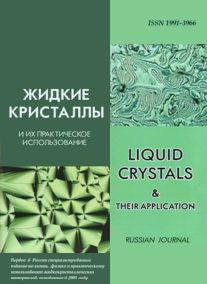|

|
Liquid Crystals and their Application
Russian Journal Zhidkie kristally i ikh prakticheskoe ispol'zovanie Жидкие кристаллы и их практическое использование |

|
|

|

|
|
|
Menu

|
|
|
|
|
Zhidk. krist. ikh prakt. ispol'z. = Liq. Cryst. and their Appl., 2015, 15 (1), 66—72. |

|
|
Polyelectrolyte Capsules Formed Using Mesoporous Matrix Based on Silica
|
E. A. Vasilieva1,2, A. B. Mirgorodskaya1, G. A. Gaynanova1,2, A. R. Ibragimova1,
I. R. Nizameev1, M. K. Kadirov1, L. Ya. Zakharova1,2
|
Author affiliations
1A. E. Arbuzov Institute of Organic and Physical Chemistry, Kazan Scientific Center of RAS,
8 Arbuzov St., Kazan, 420088, Russia
2Kazan National Research Technological University,
68 Karl Marx St., Kazan, 420015, Russia
E-mail: lucia@iopc.ru
|
|
Abstract
The encapsulation technics of the low molecular weight hydrophobic compounds (carbonic acid esters) in polyelectrolyte capsules is developed by layer-by-layer deposition of polyethylene imine and polyacrylic acid onto the mesoporous silica particles functionalized by amphiphilic calix[4]arene. A capsule size determined by dynamic light scattering method and atomic force microscopy lies within the nanodimensional range (≤ 300 nm). Permeability of capsules was estimated by spectrophotometry through the registration of the absorbency of the products of basic hydrolysis of the substrates diffused through capsule walls to the bulk solution. To assess the role of mesoporous matrix capsules were prepared through protocol involving the treatment of the substrate with calix[4]arene in the absence of SiO2. It is shown that in this case capsules are obtained with higher permeability.
Keywords: polyelectrolyte capsule, calix[4]arene, mesoporous silica, loading/release
|
|
|
|
|
|




